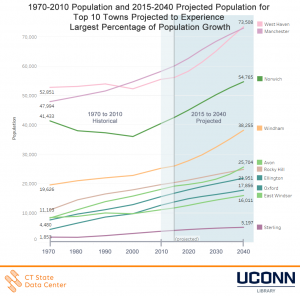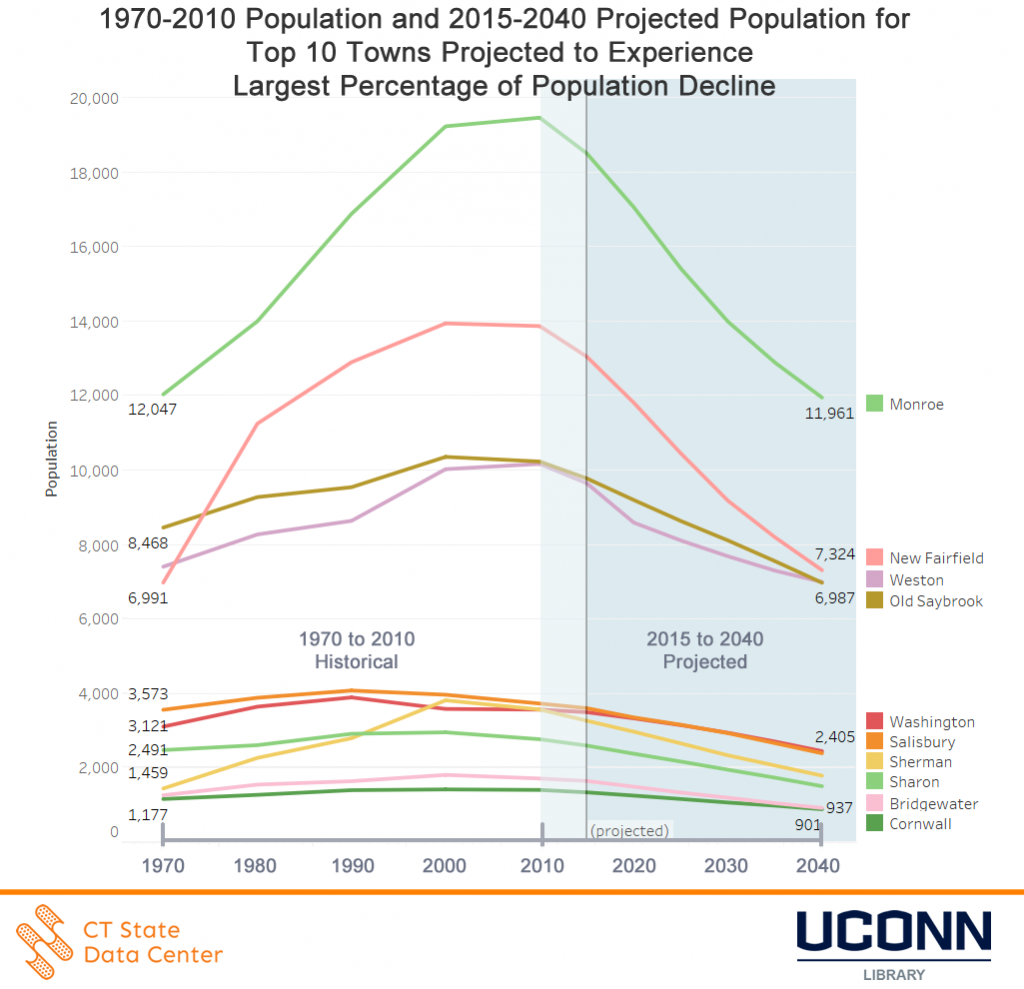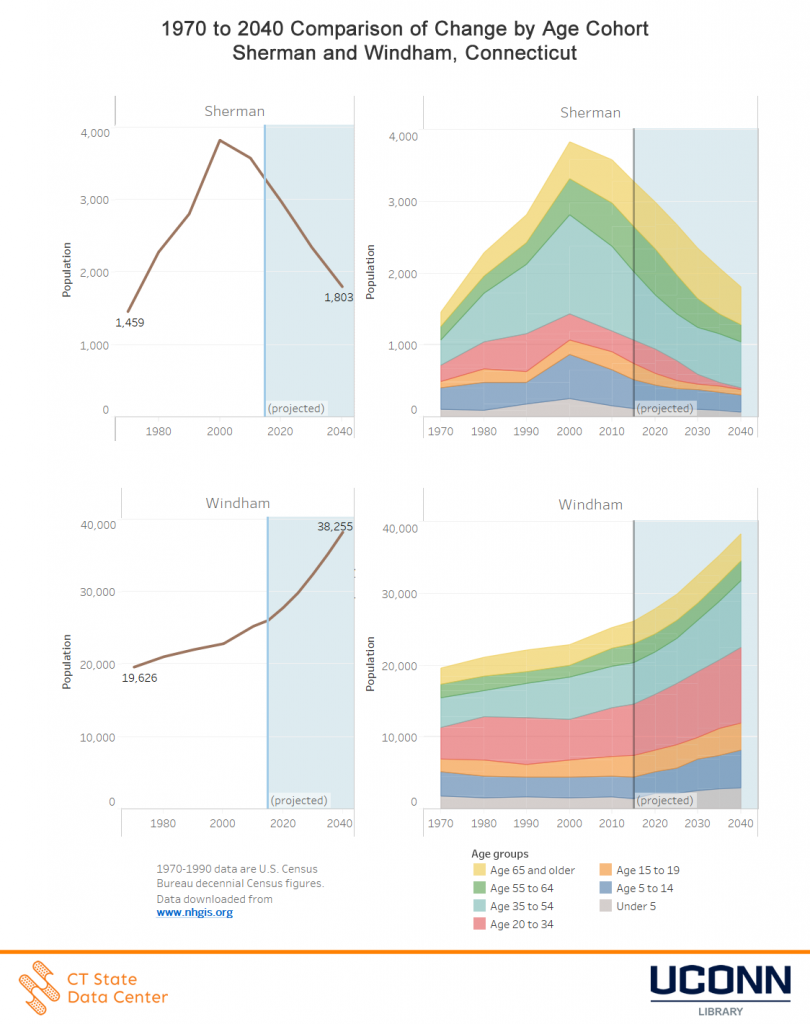August 31, 2017 – Towns in Connecticut are projected to slowly gain population as a total, according to the 2015 to 2040 population projections for all 169 towns in the state of Connecticut, released today by the Connecticut State Data Center.

1970-2010 Population and 2015-2040 Projected Population for Top 10 Towns Projected to Experience Largest Percentage of Population Growth
The new projections show that multiple towns are approaching a demographic shift due to an aging population, a near net zero overall migration rate, and a relatively low, but stable, birth rate. Windham, East Windsor, Avon, Oxford, Ellington, Sterling, Norwich, West Haven, Rocky Hill, and Manchester are expected to experience the largest percentage of increase in overall population projected from 2015 to 2040.

1970-2010 Population and 2015-2040 Projected Population for Top 10 Towns Projected to Experience Largest Percentage of Population Decline
The towns of Sherman, New Fairfield, Bridgewater, Sharon, Monroe, Cornwall, Salisbury, Old Saybrook, Washington, and Weston are projected to experience the largest percentage of decline in the overall population from 2015 to 2040.
The changing demographics by age cohort for towns in Connecticut provides a more complete picture of the overall trends within towns over time. The Connecticut State Data Center has released an interactive data dashboard to accompany the release which enables users to view demographic changes town by town with data from 1970 to 2040. When reviewing the age cohort data, long-term trends in demographics shifts within towns, and more broadly across the state when comparing multiple towns, indicate which towns are experiencing stable or declining births by examining the under 5 age cohort, as well as visually presenting the demographic shift between age cohorts as individuals age 55 to 64 age into the 65+ age cohort.
The comparison between are largest percentage of population gain (Windham) versus our largest percentage of population decline (Sherman) highlights the shifts in age cohorts within these towns.
Connecticut’s eight most populous towns will see a growing or stable population based on the projections from 2015 to 2040, following an overall trend for several of these towns since 2000.
Overview, Connecticut will grow slowly in population from 2015 to 2040. The projected populations for each town can differ over time based on factors not included within the projections model, and thus these population projections are reviewed annually by the Connecticut State Data Center and compared to the most recent data to adjust projections if data reflects changes in the projected trend for a town. For more details on the data release and how to view and access data, visit the Connecticut State Data Center 2015 to 2040 Town Population Projections site.

